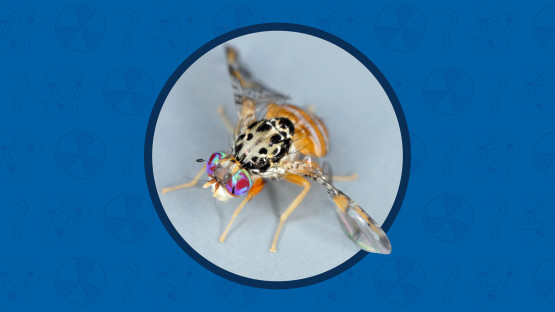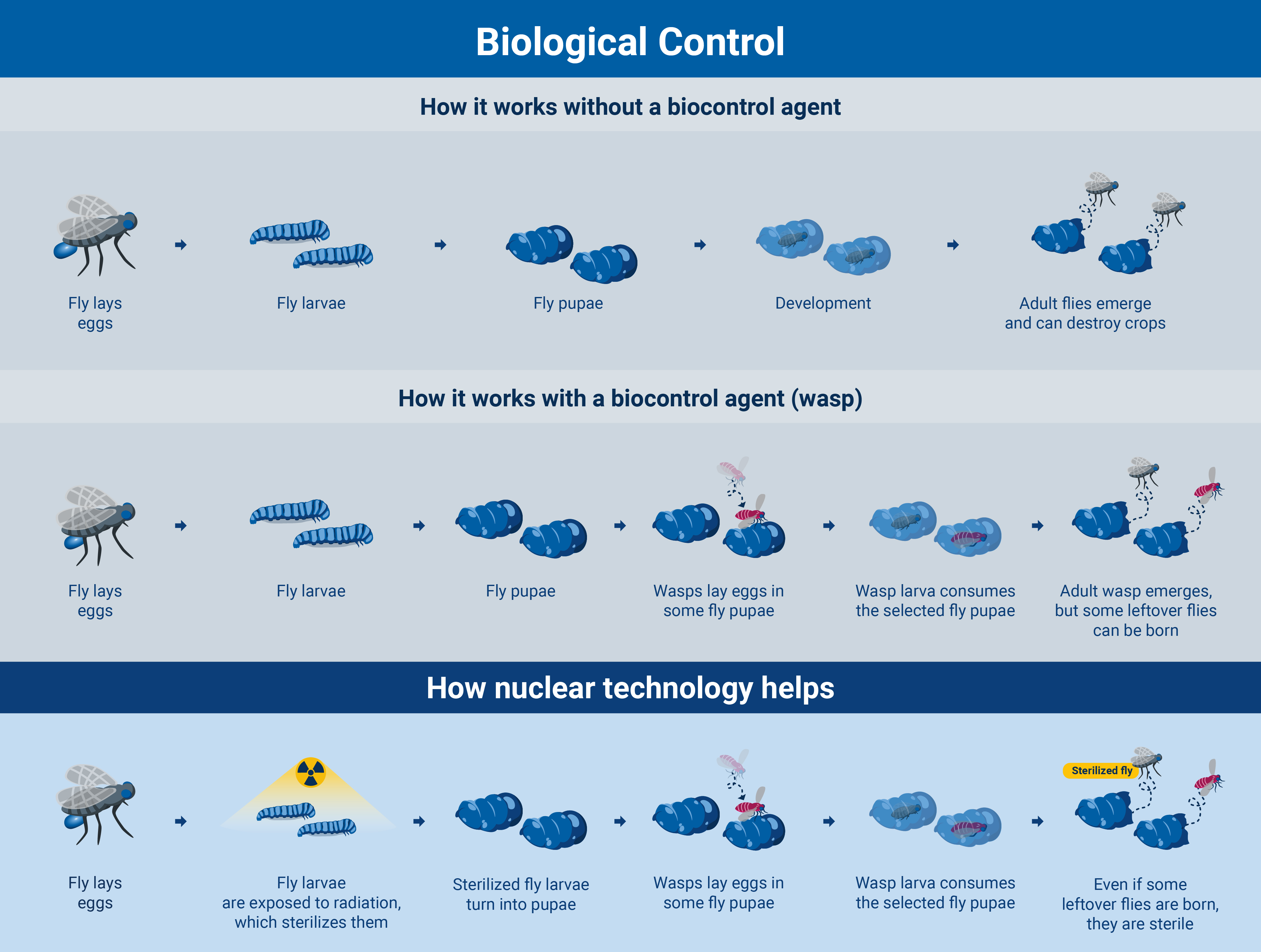Insect pests spread diseases. Mosquitoes, for example, are responsible for the spread of malaria, which affected 247 million people in 2021 alone and caused over 600 000 deaths. Parasitic insect pests, such as parasitic flies, can threaten whole ecosystems, putting at risk long-term conservation of animals and biodiversity. Other insect pests, such as fruit flies, moths, tsetse flies and screwworms destroy crops and livestock, threatening farmers’ livelihoods, harming international trade and undermining global food security. According to official estimates, pests destroyed up to 40 per cent of global crops and caused $220 billion in losses in 2021.
The use of radiation can help in the regulation or management of pests — known as pest control — effectively preventing insect-related risks to human and animal health, the ecosystems and food security (including crop and livestock production). Methods using radiation for pest control include the sterile insect technique (SIT), inherited sterility and biological control.










